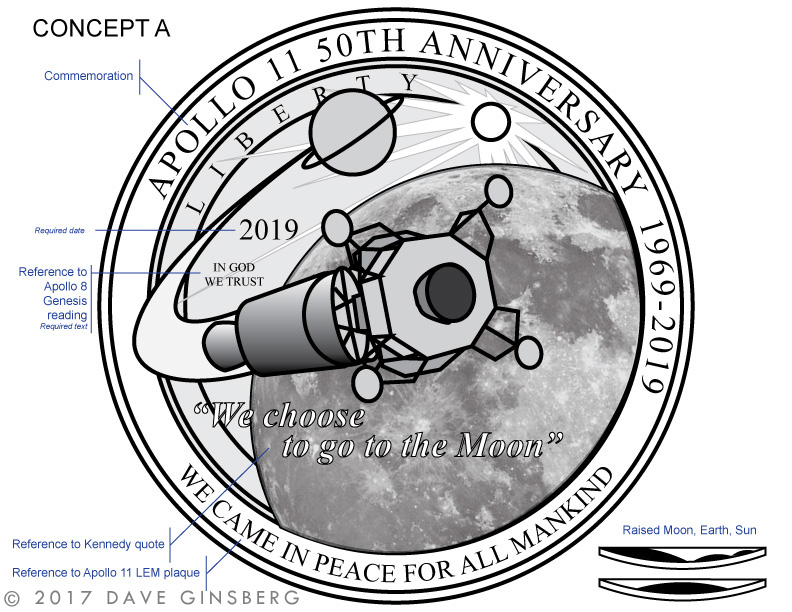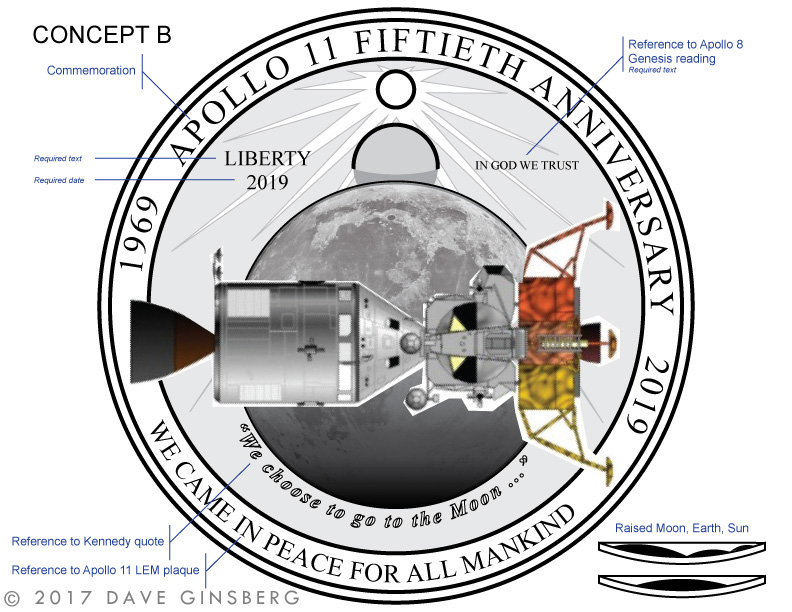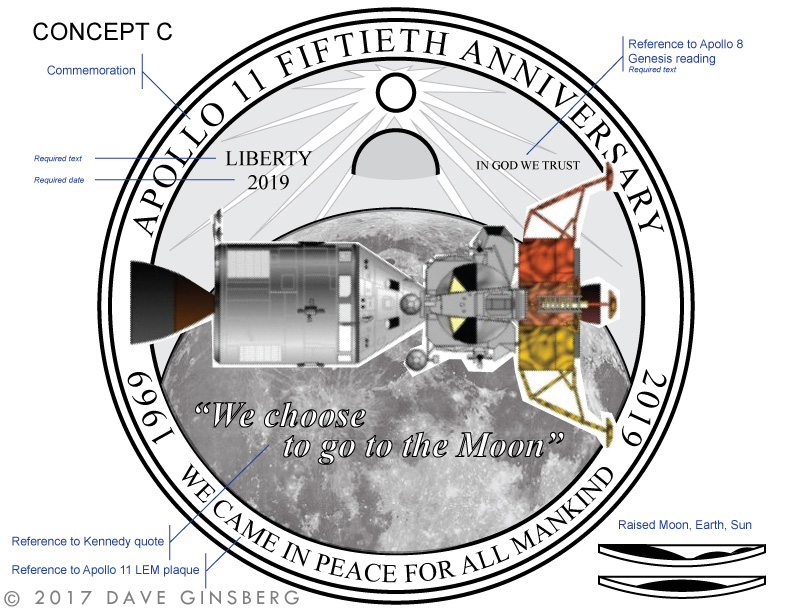We choose to go to the Moon
Apollo 11 50th Anniversary Coin Design
2017
The U.S. Mint conducted a design competition in 2017 for a set of coins to commemorate the fiftieth anniversary of the first manned landing on the Moon. I was one of eighteen artists selected from across the nation to submit a design proposal for the concave obverse side of the coin. The convex reverse design was predetermined to be the famous "visor shot" of Buzz Aldrin standing on the Moon. The design I submitted was ultimately not chosen for the production coins, however it did make a respectable standing based upon the comments seen on various coin collecting forums.
Design Concepts
My initial concept sketches featured the Apollo spacecraft (Command, Service, and Lunar Modules) together with the Earth, Moon, and Sun. Although any of the concepts might have made fine coins, I felt they were missing that "Wow!" factor. I replaced the spacecraft with a soaring eagle to capture the symbolism of that bold journey while literally referencing the name chosen by the Apollo 11 crew for the Lunar Module. I also included iconic phrases from John F. Kennedy's 1962 speech at Rice University and the plaque that was affixed to the forward leg of the Lunar Module.



Symbology
Symbolic of the epic journey from our home planet to our neighboring satellite an American Bald Eagle, emblem of the United States, is prominently depicted on a flight from the Earth to the Moon. A symbol of freedom and power, "Eagle" was the name given by the crew of Apollo 11 to the lunar lander used to make the historic first manned landing on the Moon a half a century ago.
Soaring to new heights, the eagle's grand outstretched wings are a measure of the expansive goals and breadth of mobilization of the Nation's best minds and industries. Its wide open mouth echoes the bold call to action, "We choose to go to the Moon", expressed by John F. Kennedy in his address at Rice University regarding the Nation's Space Effort on September 12, 1962. It motivated a daring choice of will to pursue space exploration and it inspired the Nation in pursuit of Man's greatest adventure.
The eagle's flight path begins by orbiting the Earth, as did the early U.S. space program with unmanned satellites. The path soars outward beyond Earth in a graceful arc leading around the Moon. The Moon is rendered as it would be seen from the Apollo spacecraft in lunar orbit, a unique perspective experienced only by the astronauts who made their triumphant voyage. As an homage to the crew of Apollo 11, the Earth is referenced from a photo taken on their outbound course to the Moon on July 16, 1969.
Illuminating the worlds in space, the Sun's rays emanate from the word "APOLLO", the Greek god of light and the Sun. Backlighting the eagle, the Sun's energy advances the intrepid bird forward in Man's quest for knowledge and enlightenment through discovery and progress.
Underscoring the design and defining the guiding principle upon which the U.S. space program was built, is the phrase, "We came in peace for all Mankind". These words were inscribed on the plaque left on the Moon on the Apollo 11 lunar module decent stage. It is written here in the same Futura font that was printed on the plaque. Perhaps better than any other phrase, it demonstrates the desire for global unity through the spirit of peaceful scientific exploration of space.






